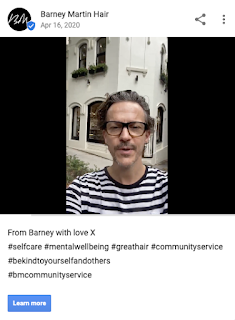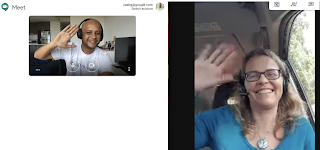Over the past two years, the ACCC Digital Platforms Inquiry explored the dynamics of the rapidly changing digital ecosystem, with a specific focus on the impact on businesses that include news media interests.
One thing was clear at each stage of the process: consumer behaviour has evolved rapidly and there have been wide ranging benefits through improved access to information (as noted in the
DPI Final Report). Consumers now can and expect to access information anywhere, anytime. Looking specifically at news, these shifts have increased the range of sources available, improving choice, discovery and access - including to smaller and independent publishers, local and global news sources. In parallel, this has also enabled news media businesses to reach global audiences.
These changes in consumer behaviour, combined with advances in technology, have contributed to both challenges and opportunities in the economics of news media. Technology has significantly increased the availability of news and other content and increased competition among publishers - at the same time enabling new digital classified businesses that benefit from car, real estate and job advertisements.
The ACCC’s Digital Platforms Inquiry considered many of these dynamics. In response, the Government recommended a voluntary code to govern the relationship between digital platforms and companies that have news media interests. Google welcomed the recommendation and was advancing a code, based on extensive and continuing consultation with news media businesses.
The Government has now announced it will move to a mandatory code and has accelerated the original timeline. In light of this, we want to respond to some misconceptions and explain how we work with a wide range of publishers, large and small.
Did Google engage with the voluntary code process? From the outset, Google actively engaged in the voluntary code process. Google acted in good faith, working constructively by consulting with more than 25 news media businesses - broadcasters, print and online publishers from metro and regional areas. We met with some publishers on multiple occasions to work through and understand complex issues. The ACCC asked Google to deliver a progress report by the end of April, which we were on track to deliver before the Government changed the deadlines and shifted focus to a mandatory code. We have sought to be constructive in our approach from the outset and have provided our update to the ACCC this week.
Is Google making money from publishers’ content? Google Search doesn't make any money when a user clicks on a news search result, rather when users click on ads. News.google.com has no ads, nor does the news results tab on the search page. And even more broadly, searches for journalistic related queries are a very small proportion of all searches and very rarely return ads. When a search query does return an ad, it’s up to the user to decide if they click on the ad - Google does not get paid for showing the ad, only if the user clicks on it.
People have come to Google for reliable information for more than twenty years. On Google Search, we show a range of results based on a user’s query and provide links to the relevant website. In the case of news, publishers
can determine how those results appear, setting the length of the short snippet from a story or turning snippets off entirely. Studies
show that snippets encourage people to click through to websites, meaning that publishers get more visitors seeing ads on their sites.
Is Google driving traffic away from publisher sites? The fact is Google drives traffic to news sites more than 24 billion times a month globally. When someone types a query into Google Search, they receive a list of search results relevant to their query. These results respond to the intent of the query -- for example someone searching for fitness tips may be shown a range of results, from workout ideas to healthy recipes, from millions of online publishers in Australia and around the world. Depending on the query, the search results may also include news results, which link through to news publisher websites.
All publishers on the internet want to be found by new users, alongside businesses that include news media interests. Publishers have always been able to decide whether their content
shows up in Google Search. Most choose to be found via Google to attract more visitors to their sites. This is traffic they say is important for their businesses, allowing them to build relationships and make money by showing people ads or opportunities to subscribe to their publications. News media businesses recognise the economic value they receive from this referral traffic.
Why doesn’t Google pay news publishers for displaying their sites in Search results? In the offline print world, publishers have long paid retailers, newsstands and kiosks to distribute their newspapers and magazines - acknowledging the value of acquiring audiences to a publishers’ content and the advertising publishers sell alongside it. Publishers provide posters with headlines for newsagents to display in their windows to help draw customers to buy papers.
In contrast, Google Search sends readers from Australia and all over the world to the publishers’ sites
for free - helping them to generate advertising revenues from those audiences and convert them into paying subscribers. The traffic we send has substantial
value. In 2018 alone, Google sent more than two billion visits to Australian news sites from Australian users, and a further billion visits from users outside Australia.
Everyone benefits from this exchange. While news content has significant social value, it is often difficult to make money from. And primarily news-seeking queries make up only a tiny percentage of queries we see. But by including news results next to other search results, we encourage users to click to view stories they might not have otherwise read, giving publishers the ability to show ads against those stories.
People trust Google to help them find useful and authoritative information, from a diverse range of sources. To uphold that trust, our Search results, including links to news stories, have always been determined by relevance—not by
commercial considerations. Google does not accept payment to appear in organic search results nor does it pay for sites to appear in search results.
Next steps The Government’s response to the Digital Platforms Inquiry acknowledged the substantial two-way value exchange between news media businesses and digital platforms. We’ve worked closely and constructively with news media businesses, the ACCC and the Government and will continue to do so to ensure we can continue to support publishers, help the wide variety of Australian businesses who advertise with us, and deliver relevant and helpful information for Australian consumers.
Posted by Mel Silva, Managing Director and VP, Google Australia








